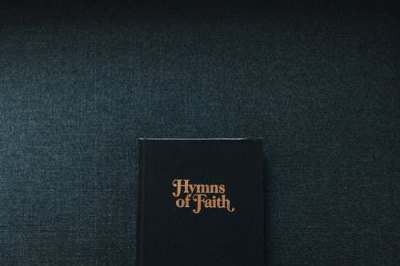Which advent is in view in 'Joy to the World'?

We are in the midst of a wonderful time in the year when we can reflect upon the advent of our Lord and the redemption that comes through faith in him. One of the most enjoyable ways to do this is through the singing of classic Advent and Christmas hymns. Songs like “Come, Thou Long Expected Jesus” and “O Come, O Come, Emmanuel” remind us of Christ’s incarnation and anticipate his soon coming again.
One of the most popular Advent/Christmas hymns, even among unbelievers, is “Joy to the World,” written by British pastor Isaac Watts (1674-1748). You can’t walk in many malls or eat at many restaurants during the month of December without hearing this song.
One of the interesting questions raised about this hymn, however, is whether it refers to the first or second advent of Christ. Read the hymn and consider which advent you think the hymn refers to:
Joy to the world! the Lord is come; Let earth receive her King; Let every heart prepare him room, And heaven and nature sing.
Joy to the world! the Saviour reigns; Let men their songs employ; While fields and floods, rocks, hills, and plains Repeat the sounding joy.
No more let sins and sorrows grow, Nor thorns infest the ground; He comes to make His blessings flow Far as the curse is found.
He rules the world with truth and grace, And makes the nations prove The glories of His righteousness, And wonders of His love.
I wrote an article that was published in the Detroit Baptist Seminary Journal in 2011 where I address Isaac Watts’s hermeneutic and eschatology, which gave me an opportunity to explore which advent is in view in the hymn.
First a little context. Watts published this hymn in a collection he called, The Psalms of David Imitated in the Language of the New Testament and Applied to the Christian State and Worship. As the title indicates, Watts published this collection as his attempt to “Christianize” the Psalms so that Christians could sing them with the full revelation of Jesus Christ in view.
“Joy to the World” is part two of Watts’s paraphrase of Psalm 98. He titled the hymn, “The Messiah’s coming and kingdom.” Here is the Psalm (ESV):
Oh sing to the Lord a new song, for he has done marvelous things! His right hand and his holy arm have worked salvation for him. The Lord has made known his salvation; he has revealed his righteousness in the sight of the nations. He has remembered his steadfast love and faithfulness to the house of Israel. All the ends of the earth have seen the salvation of our God.
Make a joyful noise to the Lord, all the earth; break forth into joyous song and sing praises! Sing praises to the Lord with the lyre, with the lyre and the sound of melody! With trumpets and the sound of the horn make a joyful noise before the King, the Lord!
Let the sea roar, and all that fills it; the world and those who dwell in it! Let the rivers clap their hands; let the hills sing for joy together before the Lord, for he comes to judge the earth. He will judge the world with righteousness, and the peoples with equity.
Most scholars view this Psalm as Messianic (as Watts clearly did), noting the references to the coming of the Lord. This coming brings salvation and judgment, resulting in joyous praise through singing and instruments, and all creation even rejoices!
Comparing Watts’s hymn with the Psalm on which it is based raises several important clues as to which advent Watts had in view. The Psalm itself does not necessarily give indication as to which advent it presents. Both salvation and judgement did come with Christ’s incarnation, although they will certainly come with finality when he comes again.
However, notice the phrases that Watts uses in his “imitation” that are not in the Psalm text. For example, Watts says that when Christ comes in the manner of Psalm 98, “sins and sorrows” will no more “grow,” and “thorns” will no longer “infest the ground.” Likewise, Christ has not abolished the curse completely yet. The fact that these kinds of universal blessings have not yet occurred seems to indicate that Watts sees them as future reality.
Thus this popular Christmas hymn is actually a hymn that refers to Christ’s second coming!
It is not inappropriate, however, to sing the hymn during this time of year. The four weeks preceding Christmas not only remember Christ’s incarnation, they also anticipate his second coming to earth, at which time full salvation and judgment will come, all the earth with rejoice, and his many blessings will extend “far as the curse is found.”
Maranatha!





















